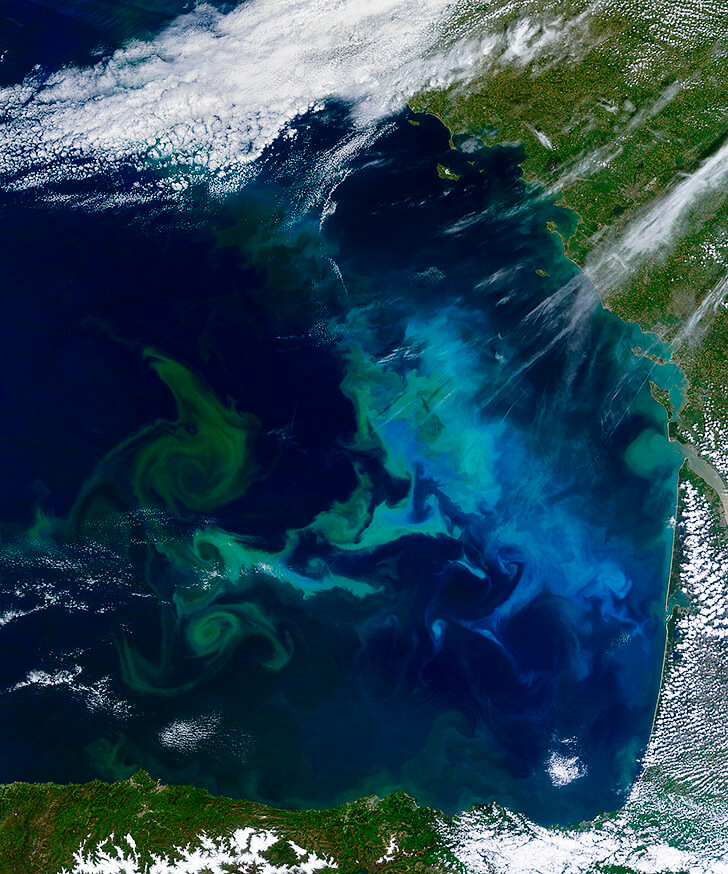Global warming causes significant changes in the composition and distribution of phytoplankton in the world’s oceans, which in the coming decades will affect its color, increasing the blue and green hues.
We have developed a global model that, depending on the local temperature increase, simulates the growth, interaction and mixing of various phytoplankton species around the world. As a result, we found out how these processes are reflected in the absorption and reflection of sunlight by phytoplankton, and showed that by the end of the XXI century more than 50 percent of the world’s oceans will change their color under the influence of climate.
The color of the ocean depends on the interaction of sunlight with what is in it. Water molecules absorb almost the entire spectrum, except for its blue part, which is reflected back, so the relatively open areas of the ocean seem dark blue from space. If in the ocean there are vast populations of any organisms, then they can affect the overall color, absorbing and reflecting light waves of different lengths, depending on their individual properties.
For example, phytoplankton contains chlorophyll, a pigment that mainly absorbs blue rays, producing carbon during photosynthesis, and reflects green ones. As a result, the algae-rich areas of the ocean have a greenish tint.
After analyzing satellite data for the past few years, the researchers refined the computer model that was previously used to predict changes in phytoplankton with increasing temperature (taking into account their growth, nutrition, mixing, and ocean currents), incorporating a new parameter: specific wavelengths of light absorbed and reflected by the ocean in specific regions.
If the global temperature increases by 3 degrees Celsius by the end of the XXI century, which most scientists predict while maintaining the current level of greenhouse gas emissions, the composition of phytoplankton will change, and in a few decades, our blue planet will look different. For the naked eye, these changes will not seem significant, and the ocean will still be bluer in the subtropics and more green near the equator and the poles. However, the color saturation will gradually increase, and eventually the difference will become noticeable.
-Stephanie Dutkevich, lead author of the study from the Department of Earth, Atmosphere and Planets at the Massachusetts Institute of Technology (USA)
Global warming and ocean color change
Click To Tweet
The post Global warming and ocean color change appeared first on Upcosmos.com.
